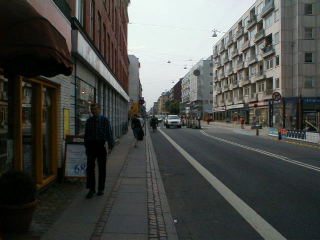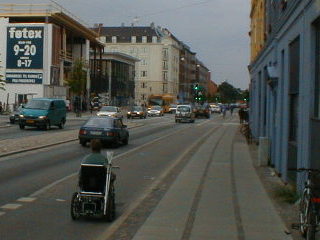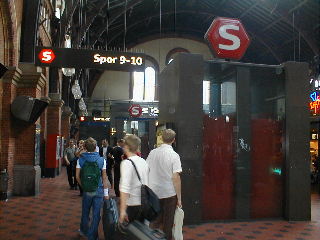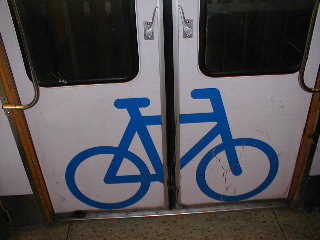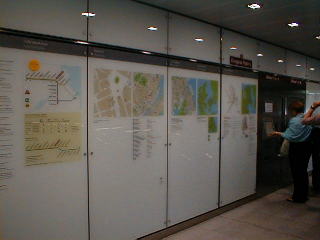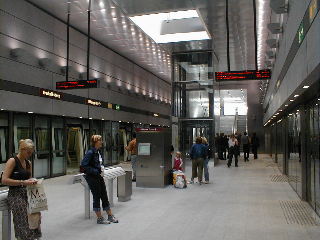The traditional paving flagstone offers an alternative to the continuously laid materials such as concrete and asphalt.
However, under modern conditions it suffers more from damage from motor vehicles which encroach on to the footpath,
The provision of service access, as with the access cover here near the central station Copenhagen, must be handled carefully.

